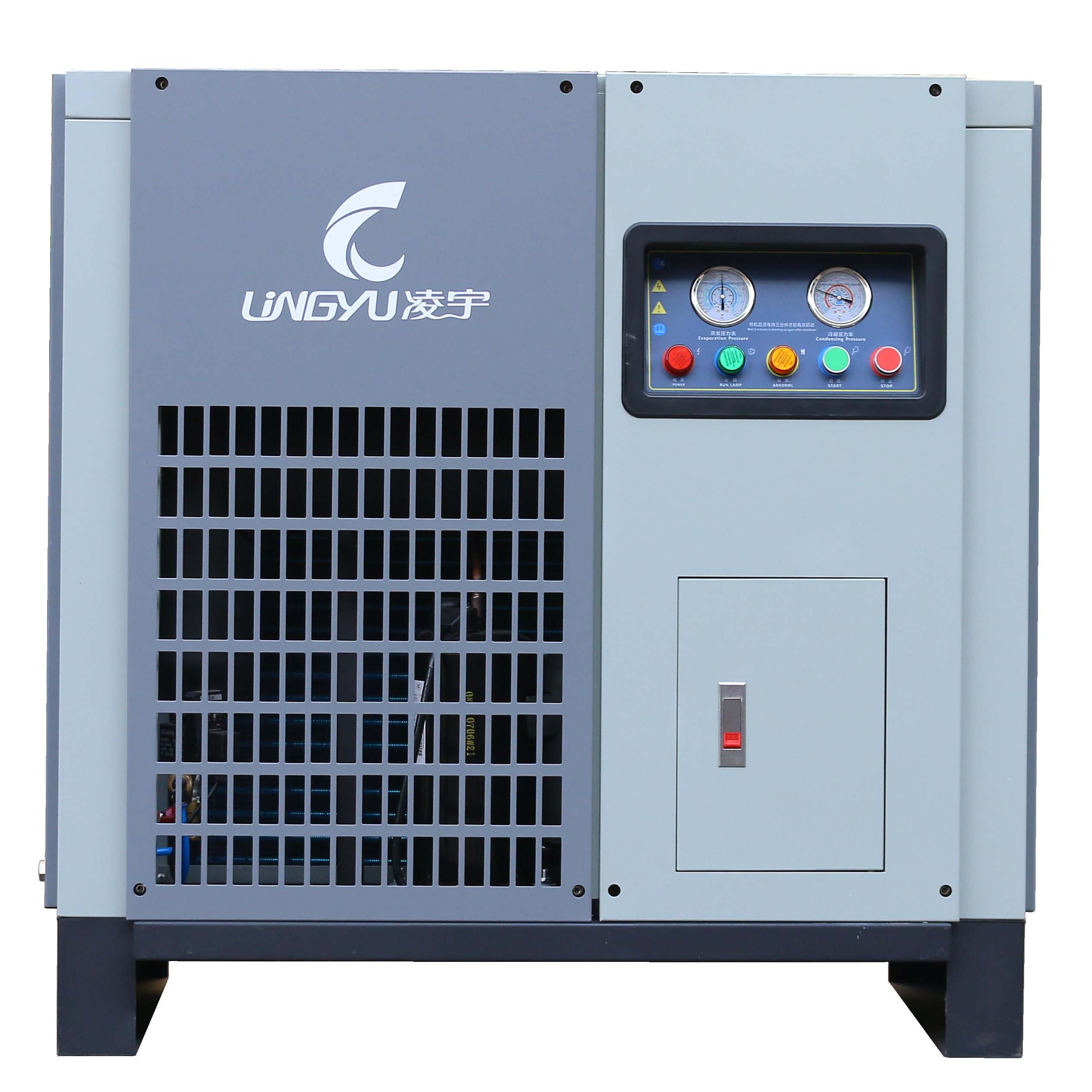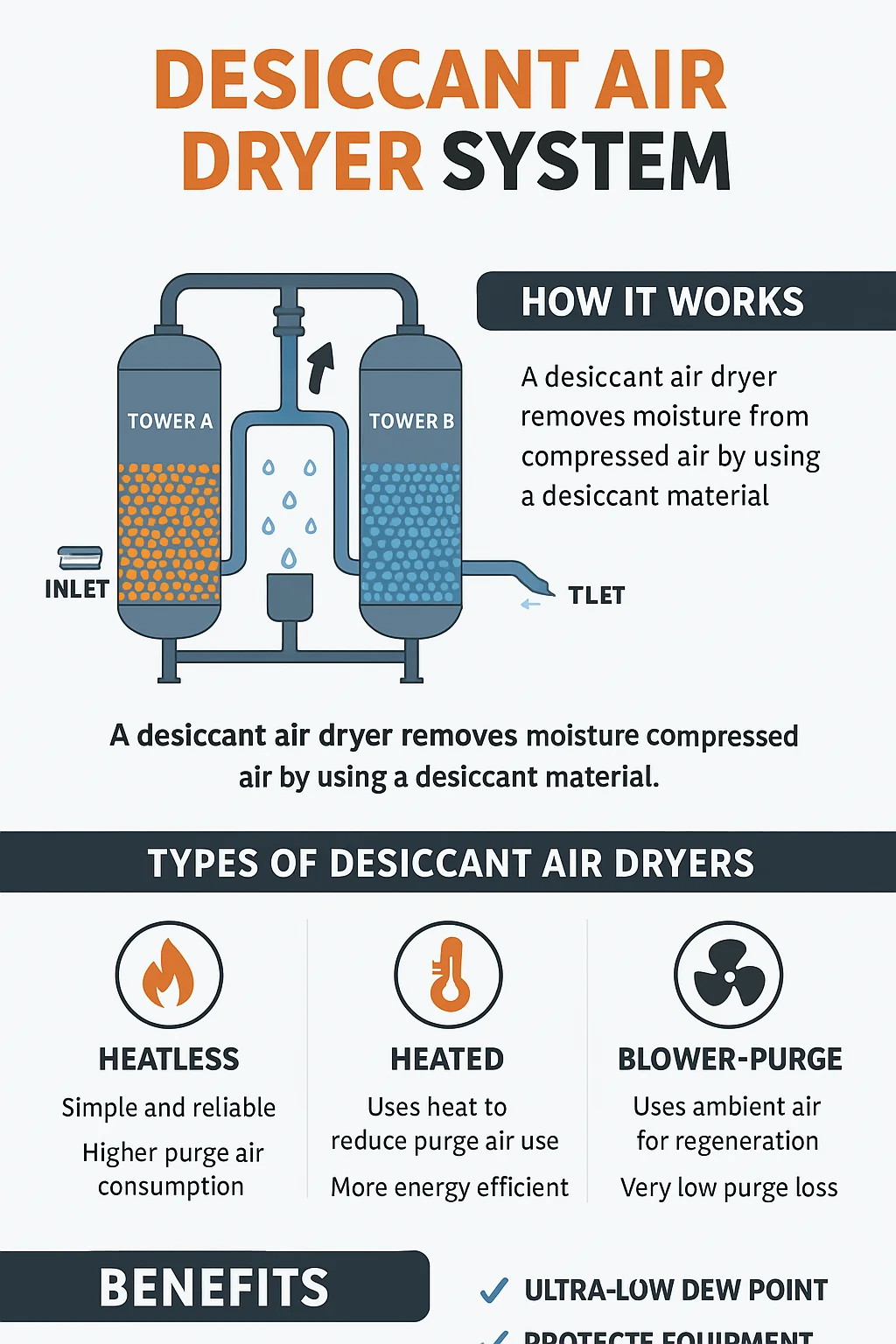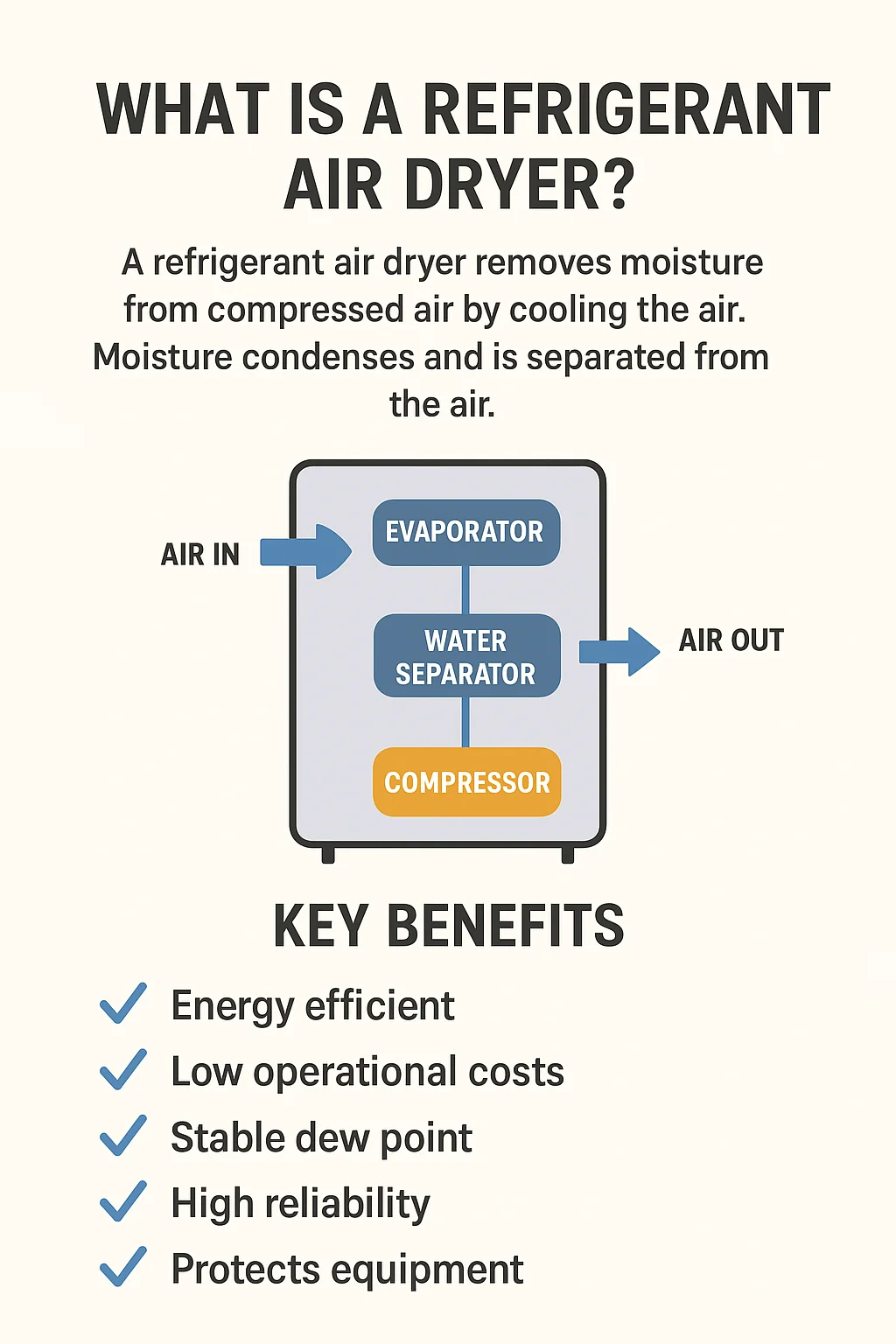Selecting the right dryer is critical for maintaining clean, dry, and efficient compressed air. But how to size a refrigerated air dryer correctly is a question many industrial operators face. An undersized dryer can lead to system moisture, corrosion, and downtime, while an oversized unit wastes energy and increases operational costs.
In this comprehensive guide, we’ll walk you through how to size a refrigerated air dryer, covering airflow (CFM), pressure, temperature, correction factors, and other key considerations. Whether you’re upgrading or installing a new system, this article gives you everything you need to make an informed decision.
🔍 Why Sizing a Refrigerated Air Dryer Matters
Before diving into how to size a refrigerated air dryer, it’s important to understand why correct sizing is so crucial:
✅ Prevents excess moisture and condensate
✅ Protects downstream tools and systems
✅ Reduces maintenance and costly repairs
✅ Ensures compliance with ISO 8573 air quality standards
✅ Optimizes energy efficiency and long-term operating cost
Improper sizing is one of the leading causes of failure in air dryer systems. Now let’s explore how to get it right.
⚙️ How to Size a Refrigerated Air Dryer: Step-by-Step Process
Step 1: Determine Your Required Flow Rate (SCFM)
Start by identifying the SCFM (Standard Cubic Feet per Minute) required by your compressed air system. This is typically equal to or slightly higher than your air compressor’s output.
📌 Example:
If your compressor outputs 200 SCFM, the air dryer should be rated for at least 200 SCFM, adjusted by correction factors (more on that soon).
Step 2: Understand Inlet Air Temperature
Refrigerated air dryers are rated based on specific inlet air temperatures—usually 100°F (38°C). If your system operates at higher temperatures, such as 120°F (49°C), you’ll need to apply a correction factor to adjust the dryer size.
📌 Rule of Thumb:
Higher inlet temps = larger dryer required.
Step 3: Determine Operating Pressure
Air dryers are typically rated at 100 psig (6.9 bar). If your system runs at higher or lower pressure, this impacts the actual volume of air that needs drying.
Higher pressure = lower required flow capacity
Lower pressure = higher required flow capacity
You’ll need to apply a pressure correction factor.
Step 4: Account for Ambient Air Temperature
Ambient temperature affects the cooling capacity of the refrigerated dryer. Hotter environments reduce performance, requiring upsizing.
| Ambient Temp | Correction Factor |
|---|---|
| 80°F (27°C) | 1.00 |
| 90°F (32°C) | 1.05 |
| 100°F (38°C) | 1.10 |
| 110°F (43°C) | 1.20 |
Step 5: Apply Correction Factors
To truly understand how to size a refrigerated air dryer, you need to apply all relevant correction factors:
Required Dryer SCFM = System SCFM × Inlet Temp Factor × Pressure Factor × Ambient Temp Factor
📌 Example Calculation:
Compressor output: 200 SCFM
Inlet Temp: 120°F → Factor = 1.2
Pressure: 90 psig → Factor = 1.1
Ambient Temp: 100°F → Factor = 1.1
Required Dryer SCFM = 200 × 1.2 × 1.1 × 1.1 = **290.4 SCFM**
You should select a refrigerated air dryer rated at least for 300 SCFM.
Step 6: Add a Safety Margin
To account for possible system expansions, fluctuations, or miscalculations, always add 10–20% buffer to your final number.
📊 Quick Reference: Correction Factors Table
| Parameter | Condition | Factor (Approx.) |
|---|---|---|
| Inlet Temp (°F) | 100°F | 1.00 |
| 110°F | 1.10 | |
| 120°F | 1.20 | |
| 130°F | 1.30 | |
| Operating Pressure | 80 psig | 1.20 |
| 100 psig | 1.00 | |
| 120 psig | 0.90 | |
| Ambient Temp (°F) | 80°F | 1.00 |
| 100°F | 1.10 | |
| 110°F | 1.20 |
🧠 Tips for Correct Sizing
Avoid exact matches: Always round up, never down
Use manufacturer performance charts: These often provide correction factor tables
Consider peak demand: Use the highest expected flow for worst-case scenario sizing
Match dryer type to compressor: For piston compressors, consider high-temp refrigerated dryers
Watch for high humidity environments: Moisture load increases drastically
🛑 Common Sizing Mistakes to Avoid
Understanding how to size a refrigerated air dryer means avoiding common errors that lead to system failures:
❌ Ignoring inlet temperature variations
❌ Using CFM without applying correction factors
❌ Undersizing for energy savings
❌ Overlooking high ambient temperatures in hot climates
❌ Not including future system expansion in sizing
✅ Benefits of Properly Sized Refrigerated Air Dryers
Once you’ve accurately sized your dryer, here’s what you’ll gain:
✅ Consistent dew point
✅ Reduced corrosion and scale
✅ Improved pneumatic tool performance
✅ Extended lifespan of downstream equipment
✅ Lower maintenance and repair costs
✅ Compliance with clean air standards
❓ FAQ: How to Size a Refrigerated Air Dryer
What is the ideal dew point for a refrigerated dryer?
Most refrigerated dryers achieve a dew point of 35°F to 50°F, which is sufficient for general industrial applications.
Can I oversize a refrigerated air dryer?
Oversizing is safer than undersizing, but too large a unit may short-cycle and reduce energy efficiency. Aim for 10–20% buffer.
Do I need to size differently for desiccant dryers?
Yes. Desiccant dryers use different dew point targets and pressure drop characteristics, so sizing principles vary.
How do I size for multiple compressors?
Combine the maximum flow (SCFM) from all compressors that may operate simultaneously. Then apply correction factors as normal.
What if my dryer is too small?
The dryer will not remove all moisture, leading to water in lines, corrosion, and possible product or equipment damage.
🏁 Conclusion
Now that you understand how to size a refrigerated air dryer, you’re equipped to avoid the costly mistakes of under- or over-sizing. By factoring in inlet temperature, pressure, ambient conditions, flow rate, and correction factors, you can confidently select a dryer that meets your system’s exact needs.
A properly sized refrigerated air dryer is not just a purchase—it’s an investment in the longevity, reliability, and performance of your entire compressed air system.
Need help sizing a dryer for your facility?
We can provide custom sizing charts, selection assistance, or product recommendations. Let us help you get it right the first time.
Related products:
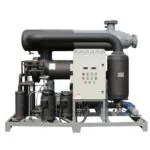
The 3885 CFM refrigerated air dryer (water cooled) is a high-capacity industrial solution designed for removing moisture from large-scale compressed air systems. Built for continuous and demanding operation, this water-cooled unit ensures a steady dew point and maximum system protection. Whether you're operating in petrochemical, steel, manufacturing, or pharmaceutical industries, the 3885 CFM refrigerated air dryer delivers superior drying performance and energy efficiency.
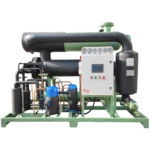
The 4238 CFM refrigerated air dryer (water cooled) is a high-capacity, industrial-grade dryer designed to eliminate moisture from large compressed air systems. Built with a powerful water-cooled refrigeration circuit, this dryer ensures reliable and continuous moisture removal with a stable pressure dew point. For industries that demand high airflow rates and dependable air quality, the 4238 CFM refrigerated air dryer (water cooled) is the ideal solution.
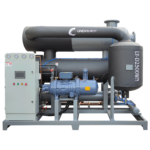
The 8830 CFM refrigerated air dryer (water cooled) is a top-tier industrial solution engineered to remove moisture from large-scale compressed air systems. Built for ultra-high capacity applications, this dryer ensures consistently dry air with a stable dew point and superior thermal control using an advanced water-cooled condenser system.

